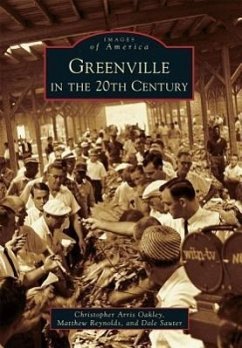At the turn of the 20th century, Greenville was a small agricultural community located along the banks of the Tar River in eastern North Carolina. Most of the 2,600 residents were connected to the state's agricultural economy, growing cotton, tobacco, corn, and other crop staples. By the year 2000, however, Greenville had become an economically diverse city of more than 60,000. The explosion in the bright leaf tobacco industry, the establishment of a public university, the recruitment of new manufacturing interests, and the creation of a regional medical complex contributed to this growth. Greenville witnessed the effects of dramatic technological innovation, a devastating depression, two world wars, a civil rights revolution, and economic globalization. Greenville in the 20th Century explores the community's growth as the seat of Pitt County through historic images that span a century.
Bitte wählen Sie Ihr Anliegen aus.
Rechnungen
Retourenschein anfordern
Bestellstatus
Storno

